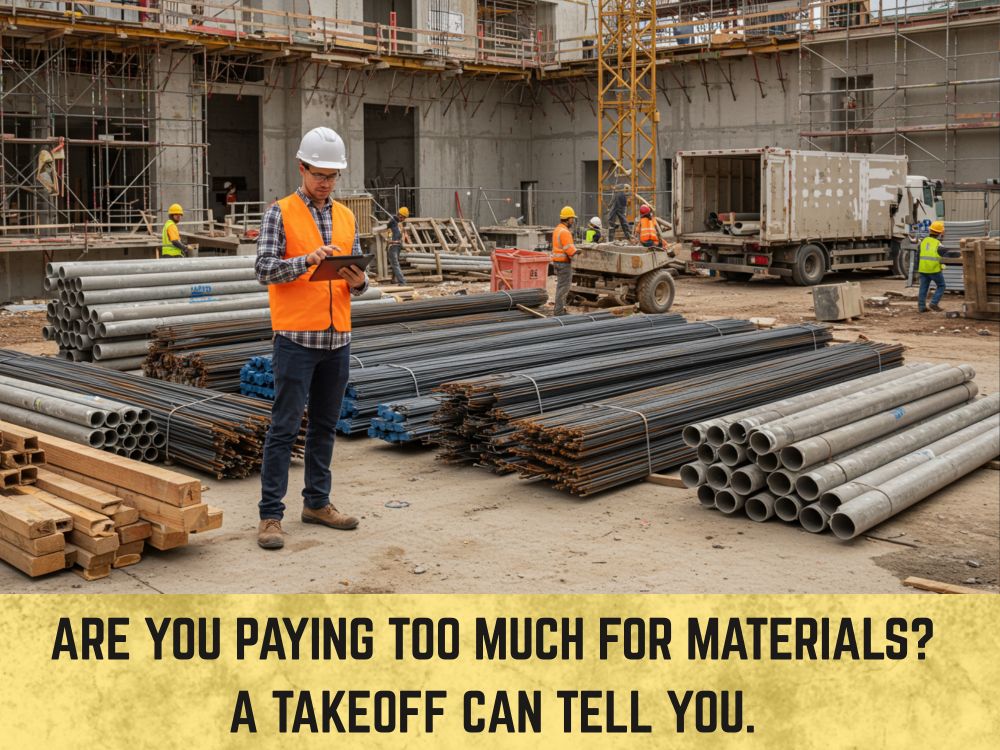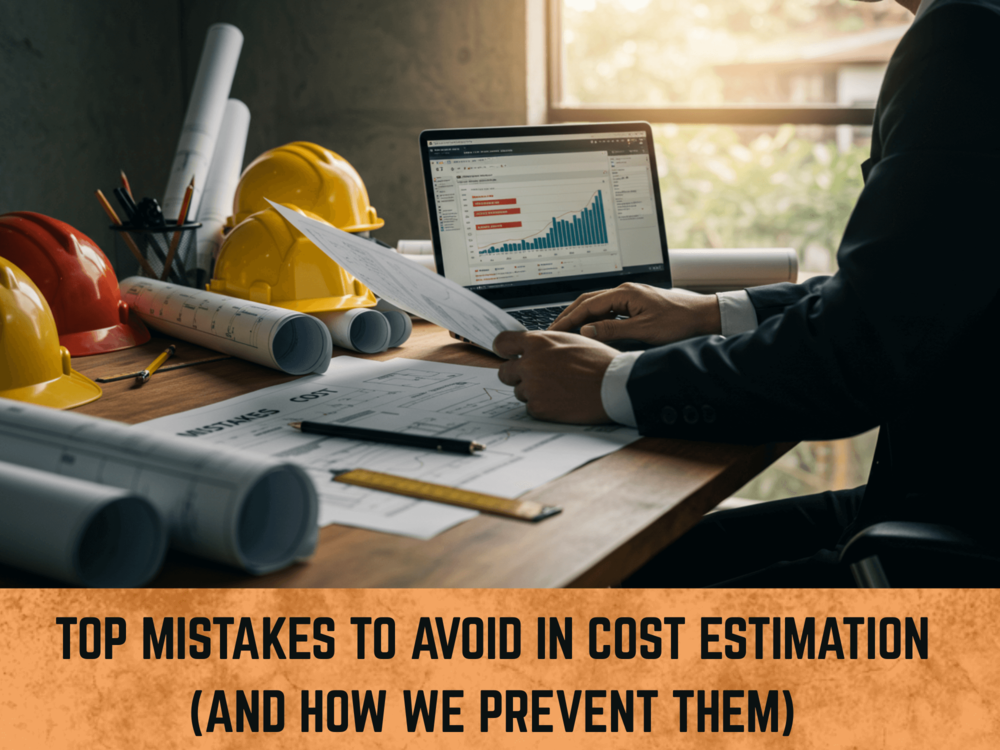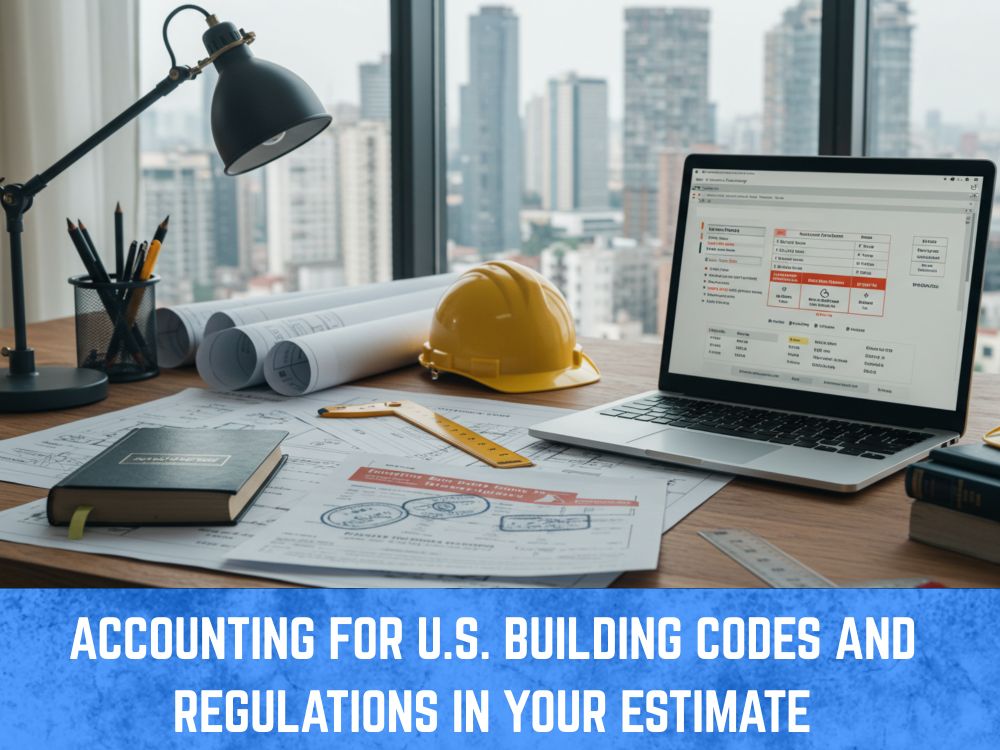In the construction industry, profit margins are famously thin. Every dollar you spend on a project counts, and a significant portion of your budget is tied up in materials. It’s easy to assume that you’re getting a good deal from your suppliers, but without a precise understanding of your needs, you could be losing thousands of dollars—not just in inflated prices, but also in waste, over-ordering, and costly delays. The solution to this problem isn’t complex; it’s a meticulous material takeoff.
A material takeoff is a detailed breakdown of every single item, down to the smallest nail, required for a project. It’s a foundational step in cost estimation, but its real power lies in its ability to give you total control over your material procurement process.
The Silent Drains on Your Project Budget
Many contractors fall into common traps that silently erode their profits. Without a detailed takeoff, these issues go unnoticed until it’s too late.
- Over-Ordering: This is perhaps the most common mistake. Without an exact count, you might add a 10% buffer to your order “just in case.” While a small contingency is wise, an arbitrary buffer often results in a surplus of expensive materials left over at the end of the job. That surplus is a direct loss of profit that could have been avoided.
- Paying for “Rough” Estimates: When you go to a supplier with a rough idea of what you need, they often provide an estimate based on their own calculations. These estimates are typically padded to account for potential unknowns and ensure they don’t lose money. You end up paying a premium for their guesswork.
- Uncontrolled Waste: Construction waste is a major problem, and much of it is preventable. If your team doesn’t have an exact material list, they might be cutting without a plan, leading to unnecessary scraps. A precise takeoff helps you plan your cuts and use materials with maximum efficiency.
- The Cost of Multiple Trips: Without a comprehensive list, you are likely to discover you’re missing a few items halfway through a task. Every trip to the supplier for a few forgotten items costs you money in fuel, and more importantly, in valuable labor time.
How a Precise Material Takeoff Saves You Money
A meticulous material takeoff turns guesswork into a strategic advantage. It puts you in the driver’s seat of your material procurement.
- Ensures You Pay the Right Price: With an exact quantity, you can approach multiple suppliers with a clear request for a bid. You can tell them, “I need exactly 500 sheets of drywall, 150 gallons of paint, and 1200 linear feet of trim.” This allows you to directly compare quotes and negotiate the best possible price. You are no longer accepting a padded estimate; you are demanding a competitive price for a precise quantity.
- Minimizes Waste and Over-Ordering: A detailed takeoff accounts for every board, screw, and nail. This level of detail allows you to order exactly what you need, minimizing surplus materials at the end of the project. It also gives your on-site team a clear guide, encouraging them to be more efficient with their cuts and usage, which in turn reduces waste.
- Streamlines Procurement and Logistics: A comprehensive takeoff allows you to order all your materials at once or in carefully planned batches. This consolidates deliveries, reduces the need for multiple trips to the supplier, and ensures that materials are on-site exactly when they are needed. This logistical efficiency saves you time and money.
- Accurate Cash Flow Management: When you know the exact cost of your materials, you can create a more accurate cash flow forecast. This helps you plan when funds will be needed for purchases, preventing financial surprises and ensuring you have the capital available when it’s time to pay.
The Shift to Digital Takeoffs
While a manual takeoff with a ruler and calculator is possible, it is incredibly time-consuming and prone to human error. The modern construction professional relies on digital takeoff tools that are faster, more accurate, and more powerful.
- Speed and Accuracy: Digital takeoff software allows you to upload blueprints and perform measurements with a few clicks. It can automatically count items, calculate square footage, and even generate a detailed material list in a fraction of the time a manual takeoff would take. This accuracy eliminates the risk of human error that can lead to costly mistakes.
- Direct Integration: Many digital takeoff tools integrate directly with estimating software, allowing for a seamless transition from the material list to the final bid. Some can even generate purchase orders automatically.
- Better Collaboration: A digital takeoff is a shareable file, allowing team members, suppliers, and subcontractors to view the same information in real-time. This eliminates miscommunication and ensures everyone is working with the most up-to-date material list.
Don’t Guess, Know.
In an industry where every penny counts, relying on a vague, “back-of-the-napkin” estimate for materials is a gamble you can’t afford. A precise material takeoff is the ultimate tool for ensuring you are paying the right price for your materials. It’s the difference between hoping for a profit and guaranteeing one. By embracing this practice and leveraging the power of digital tools, you take back control of your budget and build a more resilient, profitable business.




